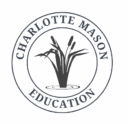Philosophy in Action
Vignettes of a Living Education
Charlotte Mason’s philosophy is not just a dry set of ideas – it’s a vision that breathes life into learning. It shapes children’s faith, character, and intellect, stirring their empathy—It’s not just about how much they know, but how much they care, and how wide the world grows for them.
Let me tell you a couple of stories I’ve heard—snapshots that reflect the heart of this philosophy in everyday life.
This road isn’t free of struggle, fear, or doubt—choosing it takes conviction, and it’s not for everyone. Every ideal carries risk; no one can guarantee that a Charlotte Mason education is a fit for you or your child. But for those who take this road less traveled, it can make all the difference.
Small Starts
Delaying formal lessons, a mother chooses presence over pressure.
We didn’t have a “first day of kindergarten” sign. No new backpack. No sparkly lunchbox. Just a child, our dining room table, and a mother wondering if she’d made a mistake.
It wasn’t that I didn’t care about education—I cared deeply. Too deeply, maybe. But everything I knew told me that school was supposed to look a certain way, start at a certain time, and follow a certain path. And yet, every time I tried to imagine my daughter in that world—where early academics might eclipse real learning, where busywork replaced curiosity, where screen time crept in too early, and where I couldn’t be sure she’d feel truly safe, seen, or understood by the adults around her—I felt a knot in my stomach. I worried about her getting lost in a crowded classroom, missing the chance to build healthy relationships, and being shaped by a system I wasn’t sure I could trust.
Still, the doubts came in waves. My in-laws questioned whether I was really equipped for this—and honestly, I wasn’t sure. I kept thinking of their words as I scrolled past photo after photo of kids heading off to school, all smiles holding up “First Day of Kindergarten” signs. Some were sitting at tidy desks at school with color-coded schedules on the wall. It stung. Not because I wanted to do it that way, but because a part of me wondered if I was shortchanging her—if this different path would be enough.
Instead, we read stories on the couch. We went for a walk outside and she smelled the fresh air, still cool from the night. She picked up a leaf and held it to her nose and called it “spicy.” I laughed—she was right. We stopped to watch a squirrel dart across the path, then listened to a bird we couldn’t see. No lesson plan told us to do this. No checklist prompted her wonder. But she was observing, noticing, connecting.
It felt small. But it felt right.
Some days, it was a battle. She’s stubborn, and I’m no pushover. But slowly, I began to see that education wasn’t about controlling her or letting her run wild—it was about walking alongside her with steadiness and vision.
Charlotte Mason’s words kept echoing in my mind: “Maternal love is the first agent in education.” It gave me something to hold onto.
I didn’t need to be an expert. I didn’t need to manufacture learning. I just needed to be present. Attentive. Willing to trust that real growth doesn’t always come with gold stars and checklists.
And then one day, she started telling a story back to me from memory—just because she loved it. Another day, she drew a picture of a sparrow she saw at the feeder and asked to look it up in a bird guide. These weren’t scheduled lessons. They were moments. Small, glimmering signs that something was happening—quietly, on its own.
So no, we didn’t post a first day picture.
But something sacred began anyway.
A Trail Back
Letting go of the grind, a family begins to recover their son—and themselves.
We’d hit a breaking point.
My oldest son—once curious, talkative, eager to learn—was shutting down. The pressure to keep up, to perform, to not fall behind had worn him thin. We’d left traditional school behind for homeschooling, but the grind followed us home. Everything still revolved around getting the work done. And he was slipping away.
He stopped asking questions. Stared blankly at assignments. Got quieter, tighter, more distant. Every subject turned into a fight. And me—trying to keep it together—I was turning into someone I didn’t like. Nagging. Snapping. Losing it over worksheets and math problems.
One afternoon, I sat outside his door after he’d walked away from the table again. I was out of ideas. I didn’t sign up to homeschool—I didn’t even want this. I just wanted my son back.
So I let it go. Not all at once, but bit by bit. We ditched the stack of papers that day and went outside instead. He kicked at the dirt, tossed a stick, didn’t say much. I didn’t push. The next morning, I handed him a book he’d once loved—no rules, just read. He took it, hesitated, then cracked it open. Later, he asked me what “forge” meant. One word, one question. It wasn’t much, but it was something.
A few days later, we went on a hike—just the two of us, a trail near home. We were trudging along when a deer stepped out, maybe ten feet away. He stopped dead, and so did it. They locked eyes, just staring, seconds stretching out. Then it bolted, gone in a flash. He didn’t say anything right then, but that night at dinner he told his dad, “I saw a deer today—stared right at me.” His dad grinned, said, “Yeah? You stare back?” He nodded, shrugged—“Till it ran.” It wasn’t much, just a quick exchange, but it felt like air after weeks of silence.
The following week I took him to the museum. He stopped at a painting of King Lear—that look on his face. He asked why he looked so wrecked. I said maybe it’s what happens when you lose everything. That night, we watched an old version of the play together. I stopped caring about the “plan” and started listening. It wasn’t perfect. We’re still figuring it out. But something had shifted—I could see glimpses of my son again. One evening, he looked up from his plate and said, “That deer—it wasn’t scared. It was just there.” I nodded. He went back to eating, but I kept that moment.
It wasn’t a worksheet or a grade. It was him—thinking, alive again.
Now, he leans into what’s in front of him. He asks questions. Looks things up. He wants to understand what he sees—how characters think, why ideas matter. He tackles work that has weight, because it means something to him.
And for the first time in a long while, I wasn’t afraid of where this was going.
I could see my son. And he was still there.
Make it Yours
Charlotte Mason’s philosophy thrives in the ordinary, as the vignettes reveal. It builds over time. Here are a few ways to begin, drawn from the moments above:
Swap a lesson for a walk.
Step outside without a plan. Let them run, dawdle, or dig. Maybe they notice something—maybe they don’t. That’s okay. The point is to let them discover and begin forming a new habit.
Read aloud together—or offer a living book.
If they’re older, hand them something with real ideas and rich language. If they’re younger, read side by side. Let it be quiet, even unfinished—or talk about it—freely. No quiz required. (What’s a living book? Find out here.)
Put up a piece of art—or visit a museum.
Print something from a famous artist and pin it to the fridge. They might not comment, but they’ll see it—in passing. Or take them to a local museum and pause at just one painting. Let it be there. Let it sit.
Listen more than you lead.
When they’re quiet or stuck, don’t rush to fill the space. A single question—about a leaf, a story, or a storm—might do more than a whole lesson.
Let them narrate.
After a walk or a chapter, just ask what stood out. No pressure. What they choose to say might surprise you.
It’s less about following rigid rules—and more about making space.
Space to care.
Space to connect.
Space to think.
Start small. See where it leads.

“In this way: give your a child a single valuable idea, and you have done more for his education than if you had laid upon his mind the burden of bushels of information.”
—Charlotte Mason
Further Paths
These stories are only the beginning.
An Introduction to Charlotte Mason unfolds the vision behind what you’ve just seen—faith, character, breadth of mind, and the dignity of the child.
The following guides offer simple ways to begin—steps, not systems—so you can build something real, right where you are.
- How to Choose Living Books for Your Child
- Nature Study: A Charlotte Mason Guide
- Narration: A Step-by-Step Guide
- Charlotte Mason Habit Training: Building Foundations for Life
- Step-by-Step Guide: Creating a Charlotte Mason Homeschool Plan
- Understanding Charlotte Mason’s Philosophy of Education
- Finding Community in a Charlotte Mason Education
